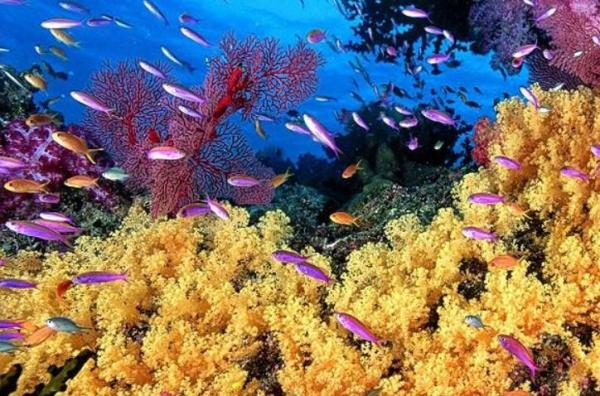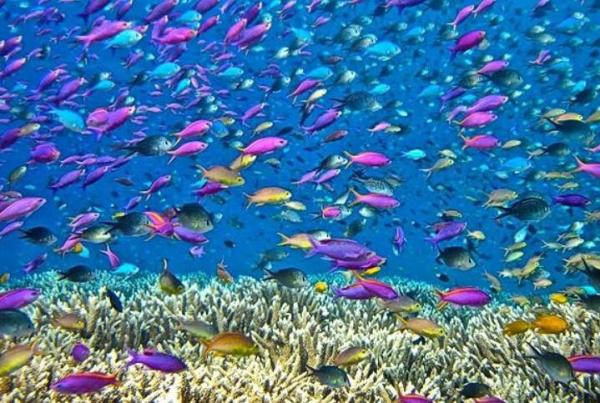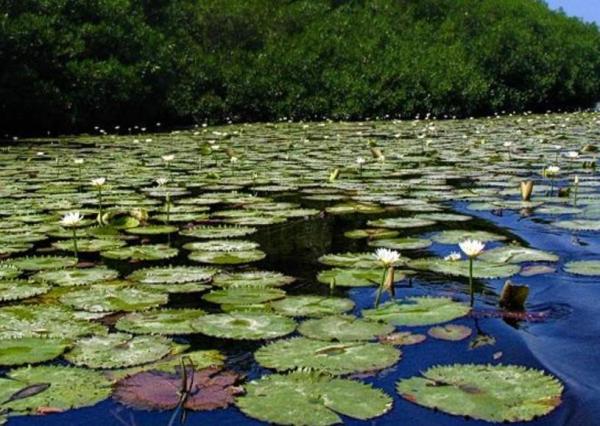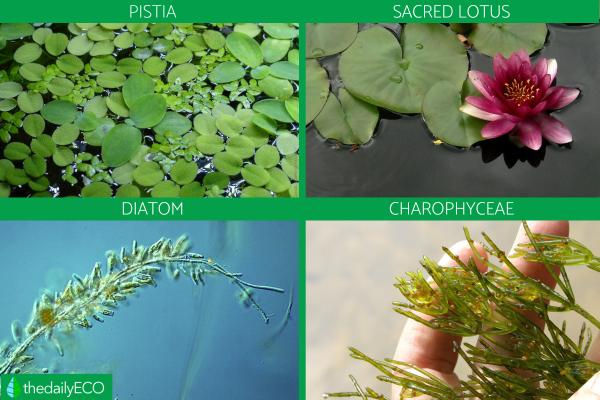
Water is one of the most important elements on our planet and necessary for the existence of life. Without it, all living things and plants would die out. Oceans and rivers feed us, regulate our climate, and produce much of the oxygen we breathe. They are also the basis for much of the global economy, supporting sectors from tourism to fishing to international shipping.
The following thedailyECO article explains what an aquatic ecosystem is, its characteristics, types, flora, and fauna.
What are aquatic ecosystems?
When we speak of aquatic ecosystems, as the name implies, we are referring to ecosystems or environments composed primarily of water. This also includes the biodiversity of flora and fauna and other organisms that exist in that environment.
The aquatic biome is the largest of all biomes, covering about 75% of the Earth's surface. Although they can be studied together or globally, it is common to distinguish between two basic types of aquatic ecosystems, freshwater or saltwater. Marine habitats include the ocean and salty seas, while freshwater habitats include ponds, lakes, rivers, and streams.
Main characteristics of aquatic ecosystems
- They provide habitat for an unimaginable number of species, both those that can live only in water and those that live both in water and on land and/or in the sky.
- Various physical and chemical elements such as salt concentration, pH, and temperature are the main components of aquatic ecosystems.
- They are among the richest ecosystems in the world because of their enormous biodiversity. Invertebrates, vertebrates, and microorganisms share habitats and natural resources through close ecological relationships.
- The flora of aquatic ecosystems consists of algae and aquatic plants.
- They have vital functions for the planet, such as helping to regulate the water cycle across the planet, providing habitat for a variety of species that would not otherwise exist, and also acting as filters for pollution.
You may be interested in this other article, where we introduce the different types of ecosystems through a list of examples with photos.

Types of aquatic ecosystems
In order to facilitate our understanding of aquatic ecosystems, we divide the waters of our planet into two major groups:
- Marine ecosystems
- Freshwater ecosystems
The main difference between the two is that freshwater habitats generally have a salinity of less than 1%, while marine life must adapt to living in a habitat with a high concentration of salt. In both cases, however, the environment is the water and determines the interactions between the plants and animals that make up the ecosystem.
In addition, these types of ecosystems can also be classified according to whether the water is in motion or whether it is still or has little motion. For example, ponds and lakes are both stationary bodies of fresh water, while rivers and streams are moving bodies of fresh water.
At the beginning of a fast-moving river or stream, the water is clear and there is plenty of oxygen. However, as the water flows, impurities can accumulate, reducing the clarity and oxygen content of the water.
You may be interested in this other article, where we explain what the difference is between biomes and ecosystems.
Marine or saltwater ecosystems
As a definition of marine or saline aquatic ecosystems, we can say that they are aquatic systems with high salinity found in areas between continents and surrounding islands. Oceanic or marine ecosystems make up 70% of the Earth's surface and 99% of the Earth's volume. It is pertinent to note that we are talking about salt waters like seas and oceans, not salt marshes, which are mixed ecosystems containing both water and land. Their salinity is lower but not as low as freshwater, i.e., brackish water.
In addition, saltwater ecosystems are characterized by great stability, which does not mean that they do not vary. Variables such as solar radiation, temperature and salt concentration and other factors play a role, especially depending on depth.
At depths greater than 1000 meters, most ecosystems are unknown, precisely because the flora and fauna at different depths are so diverse. Nevertheless, it is fair to say that coastal areas are more populous, in stark contrast to a virtually inhospitable ocean floor. This is mainly because the food chain starts with plankton, which needs sunlight to grow.
Three major zones can be distinguished, vertically divided according to the amount of sunlight they receive:
- Euphotic zone: upper layer, sunlight arrives relatively abundantly.
- Dysphotic zone: layer where sunlight penetrates only weakly.
- Aphotic zone: a deeper layer, which does not receive sunlight and contains few nutrients, such as the abyssal plains.
You may be interested in this other article, where we discuss the issue of plastic in the oceans.

Freshwater ecosystems
As the name implies, freshwater ecosystems are in places where we find freshwater, meaning they have low salinity, such as:
- Rivers
- Ponds
- Swamps
- Lagoons
- Lakes
The salinity of fresh water is logically much lower and is a source of water for drinking and irrigation of plants. The freshwater ecosystem is critical to the survival of most living things, whether fauna, flora, or vegetation, and has a direct impact on the various types of biomes that exist on Earth.
In these ecosystems we also find a great variety of fish and all kinds of amphibians, with a wide range and typology of vegetation. In fact, about 41% of the world's wealth of fish species live in freshwater.
Various factors such as weather (the sum of vectors such as elevation, temperature, and humidity) and topography determine the characteristics of these habitats. For example, the flora and fauna of a shallow lake in a northern mountain range will be very different from a shallow warm-water lake in a tropical climate zone. In each environment, in each ecosystem, the ideal conditions are created for these life forms to thrive. In fact, we could say that each ecosystem is unique.

Flora of aquatic ecosystems
The flora in aquatic is very diverse. The freshwater ecosystems that include rivers, lakes or wetlands, among others, are one of the most fertile areas and therefore, where we can find the greatest biodiversity of vegetation. The beach areas, on the other hand, are not very hospitable substrates for the various plants due to their salinity.
Most marine flora consists of microscopic algae called phytoplankton, which float on the surface and produce through photosynthesis about half of the oxygen that humans and other land creatures breathe. In addition, underwater plants contribute to the stabilization of sandy areas.
Here you will find the names of some species of plants and algae from freshwater and saltwater:
- Common water hyacinth
- Lotus
- Pistia
- Charophyceae
- Klebsormidiales
- Mesostigmatophyceae
- Conjugatophyceae
- Chlorophyta
- Lycopodiopsida
- Chlorophytum
- Charophyta
- Coleochaetaceae
- Chlorokybus
- Diatom
- Dinoflagellates

Fauna of aquatic ecosystems
In aquatic ecosystems, we find an infinite variety of animals, from fish, amphibians, marine and freshwater mammals, to some aquatic birds and reptiles that spend much of their lives in the water or near the shore. Aquatic ecosystems are thus considered to be incredibly diverse.
Most aquatic animals breathe through gills, but that is not the only way animals breathe in this environment. Some aquatic animals are even able to breathe through their skin. If you want to learn more about this way of breathing, do not miss this other article about skin breathing.
These are the names of some species of fauna of fresh and salty aquatic ecosystems:
- Shark
- Whale
- Dolphin
- Starfish
- River crab
- Catfish
- Marine sponge
- Otter
- Sea urchins
- Eel
- Tuna
- Salmon
- Hermit crab
- Manta ray
- Seagull
- Pelican
- Swan
- Flamingo
- Frog
- Axolotl
- Turtle
- Crocodile
Learn more about the amazing aquatic ecosystems in the video we leave you below.


If you want to read similar articles to What Is an Aquatic Ecosystem?, we recommend you visit our Ecosystems category.